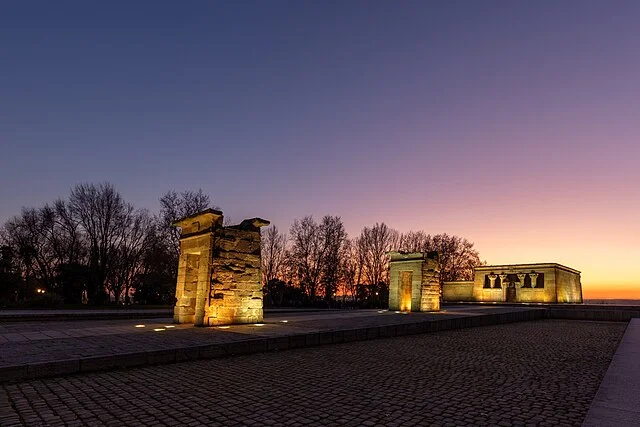The Temple of Debod, a unique piece of ancient Egyptian architecture, now stands in Madrid, Spain. Originally built in the 2nd century BC in southern Egypt, this ancient structure was dedicated to the gods Amun and Isis. Over centuries, it witnessed modifications and expansions under various rulers, reflecting its enduring religious importance. Today, the temple provides valuable insight into Egyptian architectural styles and religious practices, while also representing an exceptional story of preservation and international cooperation.
Get your dose of History via Email
Origins and Construction
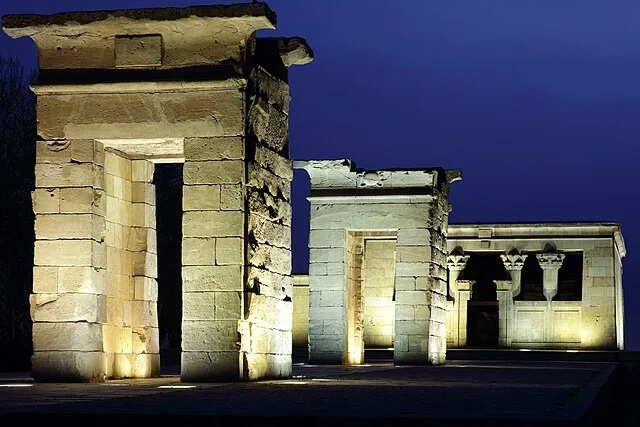
Construction of the Temple of Debod began around 200 BC under the Nubian king Adikhalamani, who ruled the Kingdom of Meroë. The temple initially honored Amun, a central deity in Egyptian and Nubian cultures, and later became dedicated to Isis, the goddess associated with fertility and magic. Each new ruler added to the temple complex, expanding its features and decorations over time.
Built using sandstone, the structure followed typical Egyptian temple designs. A rectangular layout and pylons (large gateways) flanked the entrance, and intricate hieroglyphic carvings covered the walls. These carvings displayed religious scenes, depicting gods receiving offerings from pharaohs. The temple’s sanctuary housed statues of the deities, creating a sacred space for rituals.
Expansion and Decline
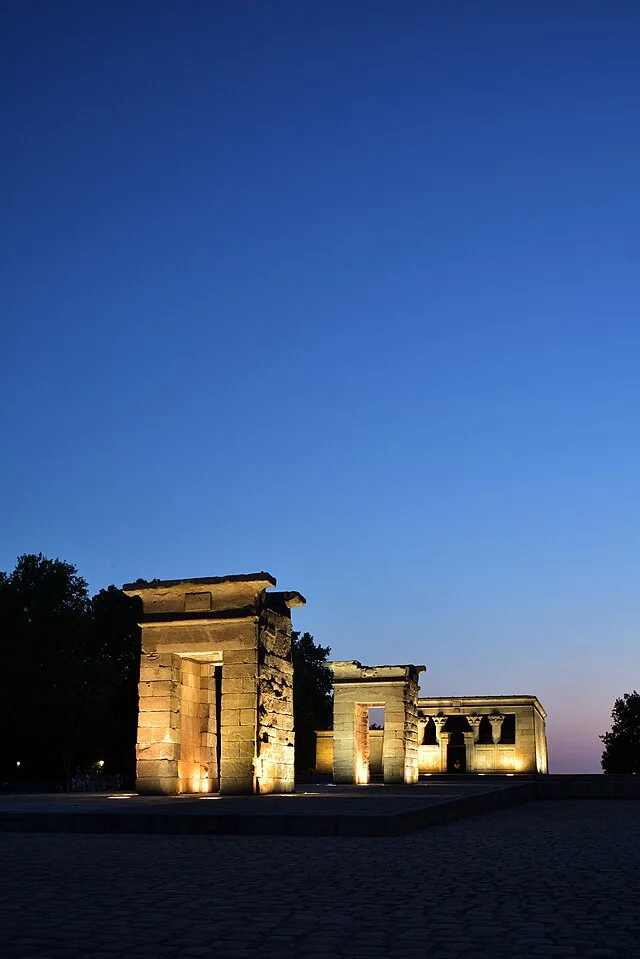
During the reign of Ptolemy VI in the 2nd century BC, Egyptian influence spread through the region, prompting further enhancements to Debod. This included the addition of new chapels and the decoration of existing walls. With the arrival of the Roman Empire in 30 BC, the temple saw continued use, though traditional Egyptian practices started to decline. Roman emperors Augustus and Tiberius maintained the temple, but by the 4th century AD, Egypt’s religious landscape had shifted towards Christianity. The Temple of Debod, like many other ancient Egyptian temples, eventually fell into disuse.
Relocation to Madrid
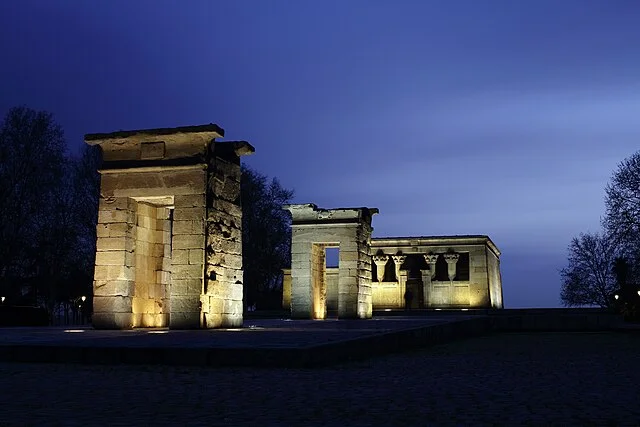
In the 20th century, the construction of the Aswan High Dam in Egypt created an urgent need for historical preservation. The dam’s reservoir would flood many ancient temples and monuments. To save significant structures, UNESCO initiated an international campaign, encouraging other nations to assist Egypt. In 1968, as a gesture of appreciation, Egypt gifted the Temple of Debod to Spain for its contribution to saving the Abu Simbel temples.
Carefully dismantled, the temple was transported stone by stone from Egypt to Spain. Spanish experts then reassembled the structure in Madrid, aligning it precisely to replicate its original orientation towards the Nile. Completed in 1972, the Temple of Debod opened to the public in Madrid’s Parque del Oeste, becoming one of the few examples of ancient Egyptian architecture outside Egypt.
Architectural Features
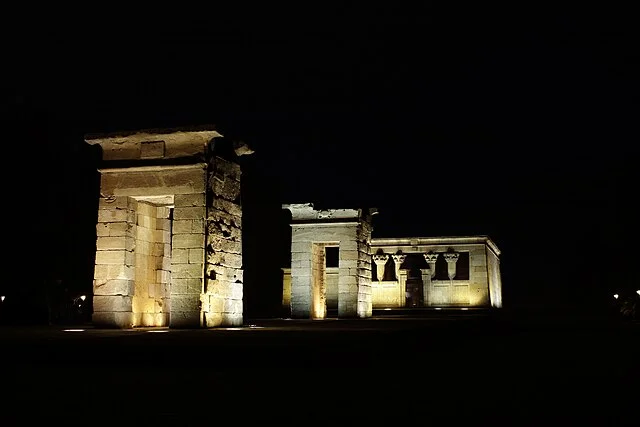
The Temple of Debod is distinguished by several architectural and symbolic elements. The temple’s gateway, or “pylon,” leads to a small hall with intricate carvings that narrate ancient Egyptian mythology and ritual practices. This chamber connects to the inner sanctuary, where the temple’s primary statues once stood. While parts of the temple, including the outer wall carvings, have eroded over time, many details remain intact.
The sanctuary itself features wall reliefs with images of gods, pharaohs, and other sacred symbols. These depict scenes of devotion and offerings, capturing the essence of Egyptian worship and the reverence for gods like Isis and Amun. Additionally, the Madrid location has preserved some of the outer structures, such as a small chapel dedicated to the goddess Hathor.
Preservation and Cultural Impact
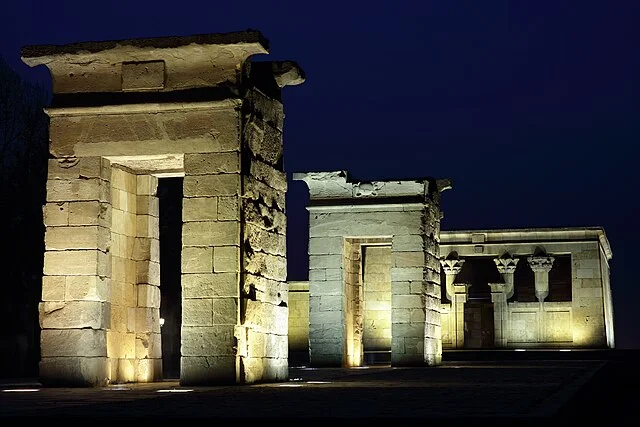
The Temple of Debod has become a cultural and historical landmark in Madrid. Spanish authorities have taken measures to protect it, including restoring deteriorated sections and managing visitor access to prevent wear. Although the temple no longer serves its original religious purpose, it plays a crucial role in educating the public about ancient Egypt’s architectural heritage.
Many visitors, including researchers and historians, study the temple to gain a deeper understanding of Nubian and Egyptian religious practices. Its relocation also highlights the impact of international cooperation in preserving historical monuments. The UNESCO campaign that saved Debod set a precedent for heritage protection efforts worldwide.
Conclusion
The Temple of Debod stands as a testament to ancient Egypt’s architectural mastery and religious traditions. Although thousands of miles from its original home, the temple has found new purpose in Madrid. Its preservation and relocation underscore the importance of protecting cultural heritage. Through international cooperation and meticulous care, the Temple of Debod remains an enduring symbol of ancient civilization in a modern context.
Source:

